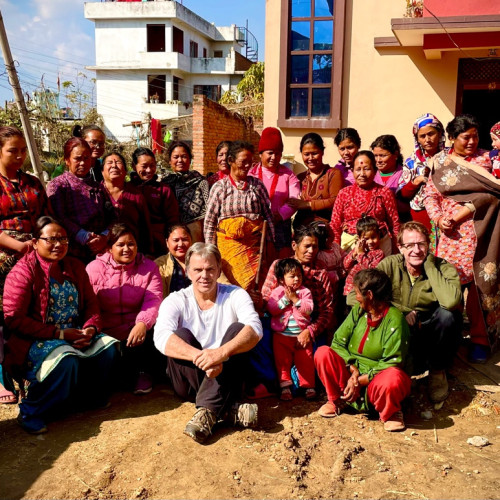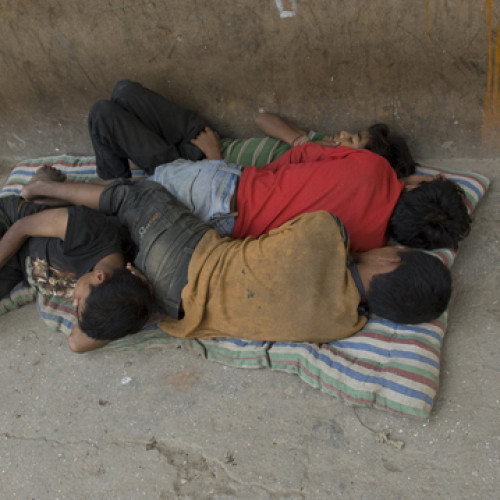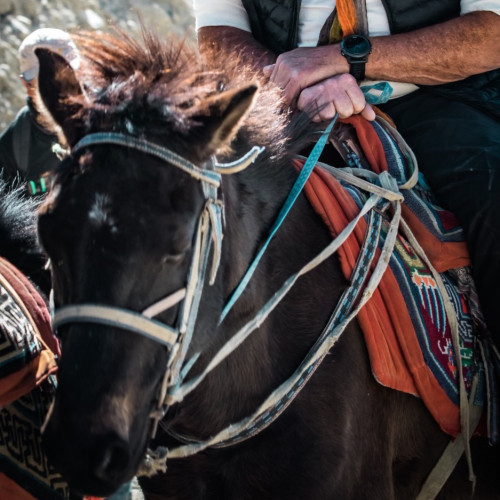Getting Back on the Horse

It was the first moment that I felt I was over the hump, the pandemic was starting to retreat in everyone’s consciousness, and masks were staying in pockets more often than not. Although we have been taking a few trips together over the past two years, this would be the first time that I personally would leave the UK since the first lockdown; Greg, however had dipped his toe in the water a couple of times during travel “windows” and was already ahead of me in getting some movement under his belt. I was itching to resume my old life.
I started to get my kit together, rooting in cupboards and storage boxes. I'd moved house since the pandemic began and had yet to develop organised routines for my kit. It’s only through practice and repetition that routines become established, and I badly needed to get back into the groove. I made a mental note of the big decisions (tent vs bivi bag, cooking vs cold food etc.) and cleared the layout spaces that I planned to use for the forthcoming journey.
Packing is one of my favourite parts of a venture, and I have rituals that I’ve come to be very fond of over the years. Every time I pick up a piece of equipment, residual memories of past journeys seem to permeate my consciousness. As I lay it in its place in the packing space I’m aware that, like me, most of my kit has “miles on the clock”, and all of it bears the marks of use. I look at a dry bag with a hole worn in the side where it had rubbed on a back rack it was never designed to be on. I remember a campsite where I discovered the hole and made a hasty repair.
The packing space always starts on the bed for the first sift; it’s the first stage of layout and where the luggage decisions are made. One or two big bags…or lots of small bags. It’s the most comprehensive layout, as the process continues kit will be systematically ditched either to shed weight, reduce pack space, or both. It is a rule of thumb that if you bring something back unused, it doesn’t go again. There are some items though that are always carried, such as the bog digger - you hope you won’t need to use it, but experience teaches you otherwise.
So the bog digger takes its place in the essentials, a waft of woodland about it. The layout stage spreads across rooms and slowly begins to creep around the house. The bed is where the means to sleep and the means to stay warm and dry, are set out. The kitchen is for food and the means to cook or prepare it, and finally the kit room floor for tools and hardware, the stuff you hope not to use, but you know you will.
No matter where I am in the world, the bed is the main layout space. The ritual of folding clothes and stuffing it into dry bags remains unchanged whether you find yourself in the swankiest hotel a developing country has to offer, a huts shared with chickens and goats or a rest house rented by the hour. I remember one place in South America where the noise of the animals made it impossible to think, and I mislaid a well-used and much-loved knife. Just a few days later, I parted with 500 pesos for a replacement that has since travelled the world with me and innumerable chopped onions later, is now so worn that the blade has become curved. But it is still in its homemade sheath, made from an old dustpan handle and zinc oxide tape from the first aid kit.
Part of the bed layout is set aside for what I call the odds’n’sods pile. This is things like electronics and chargers, journals, notebooks, and pencils, for credit cards and currency, photocopies of passports and driving licenses etc, and of course, the passport itself. It’s the passport that grabbed my attention at this point. I sat on the bed and flicked through it. As I looked at visas and entry stamps from all over the world, memories came flooding back. Looking across the rift valley in Malawi, the magnificent Baobab Valley in Ruaha, Tanzania, the rich smells of the jeera mills in Kathmandu, the damp smell of the jungle in Laos. I remembered tiny airports such as Kangerlussuaq in Greenland, Taplejung and Jomsom in the Himalayas. Getting out of a rickety plane at altitude, surrounded by snow covered mountains – flying over the Greenland ice cap in a single-engine Beechcraft with a slightly unhinged Swiss pilot grinning as he did aerobatics to try to make us throw up.
In all my travels around the EU though, not one single stamp. Schengen had helped me save passport pages (my previous passport was full after only six years), but it had robbed me of some of the memories that are imprinted on the dog-eared pages of my latest iteration. I idly wondered what would happen this trip, as free movement through the EU has been the default for so long. I can't really remember much about the time before Schengen, just dim recollections of green cards and carnets. I guessed I was about to find out. I laid the passport down and went to make a cup of tea.
Just 36 hours later my curiosity was sated, we sat in the “other passports” queue in Amsterdam and watched the “European” passports lane waved through. It was a slow passage through the port estate, but eventually, we found ourselves driving down the now unfamiliar right- hand lane of the road. As if restrictions and lockdowns had never happened, once again we were truly travelling, with entry visas newly stamped, through unknown places and along unfamiliar
roads.
Just a short while later, the past two years had melted away and once more, I found myself in an old familiar headspace, going through tried and tested diagnostics for a tricky section of navigation. I stopped to make a peanut butter sandwich and smiled. I decided to keep the sun at my right hand and just head vaguely south for a few hours…no rush.
It was good to be back.



